Description
Snowball Y Improved Cauliflower
50 Seeds per pack
Days to Maturity: 65–80 Days
Sun Requirements: Full sun (6–8 hours); tolerates partial shade in hot climates to prevent bolting.
Botanical Name: Brassica oleracea var. botryti
Snowball Y Improved is a dependable, open-pollinated heirloom cauliflower introduced by Ferry-Morse in 1947 and bred from the classic “Snowball” strain dating back to 1884. This self-blanching variety forms smooth, well-rounded, snow-white heads that range from 6 to 8 inches across and often weigh up to 3–5 pounds. Its silvery-green wrapper leaves naturally curl inward to protect the developing curds from sun scald, eliminating the need for tying.
Known for its vigorous growth, uniform heads, and dependable yields, Snowball Y Improved is an excellent choice for both home gardeners and market growers. Plants grow about 24–30″ tall with a compact 12″ spread, producing dense curds ideal for freezing, roasting, ricing, or mashing. The flavor is mild and slightly nutty, with a tender texture that holds up well across a range of culinary uses.
Adaptable to both fall and winter harvests, this variety performs especially well in short-season climates. A true classic that earns its name—Snowball Y delivers pure white color, delicious flavor, and a generous harvest!
Planting Instructions for Snowball Y Improved Cauliflower Seeds
When to Plant:
Start Snowball Y Improved cauliflower seeds indoors 4–6 weeks before your last expected spring frost. For a fall crop, sow seeds indoors 10–14 weeks before your first expected fall frost. Transplants should be 4–6 weeks old, with 4–6 true leaves, and fully hardened off before planting outdoors.
Snowball Y Improved cauliflower can also be sown directly outdoors, but this is best done in late summer for a fall harvest, as spring direct-sowing often results in bolting due to uneven temperatures. Direct sowing in spring is not recommended unless you have a very stable, mild climate. For continuous harvests, sow in succession every 2–3 weeks over a 6-week period. Avoid sowing during periods of high heat, as Snowball Y Improved cauliflower is sensitive to temperature extremes.
Where to Plant:
Choose a site with full sun exposure—at least 6 hours daily. In hot climates, providing light afternoon shade using shade cloth, row covers, or taller companion plants can help prevent heat stress and bolting. Plant in rich, well-drained soil. Snowball Y Improved cauliflower requires a slightly alkaline pH of 6.5 to 7.5 to deter clubroot and promote healthy growth. If needed, lime the soil in the fall prior to spring planting.
Amend the bed with 2–3 inches of compost or well-rotted manure and work it into the top 6–8 inches of soil. For heavy clay soils, improve drainage by adding coarse sand or compost. Practice strict crop rotation: do not plant Snowball Y Improved cauliflower where any brassica (cabbage, broccoli, kale, etc.) has grown in the past 3 years.
How to Plant:
Sow seeds ¼–½ inch deep in seed trays or pots filled with sterile, peat-free seed-starting mix. Maintain soil temperature at 70–80°F for optimal germination. Use a heat mat if needed. Seeds usually sprout in 8–14 days. Once seedlings develop their first set of true leaves, thin to one plant per cell or pot. Harden off seedlings over 7–10 days before transplanting outdoors.
Space transplants 18–24 inches apart in rows spaced 24–30 inches apart. Plant slightly deeper than they were growing in their containers, firm the soil around the roots, and water well.
Growing Tips:
Snowball Y Improved cauliflower is a heavy feeder and benefits from a steady supply of moisture and nutrients. Keep the soil consistently moist, watering deeply once or twice per week depending on rainfall. Use mulch—such as shredded leaves, grass clippings, straw, or compost—to retain moisture, suppress weeds, and moderate soil temperature. Avoid overhead watering to reduce the risk of disease. Apply a nitrogen-rich organic fertilizer (e.g., fish emulsion) every 2–3 weeks during early growth, and again once heads begin to form. Too much nitrogen, however, may cause hollow stems.
Use floating row covers from the moment of planting to protect from cabbage worms, root maggots, aphids, and flea beetles. If you notice the white cabbage butterfly in your garden, take immediate action to check for larvae. For fall crops planted in warm weather, provide partial shade with cloth or netting to prevent bolting.
Blanching:
Snowball Y Improved cauliflower is naturally self-blanching—its silvery-green wrapper leaves curl inward to protect the developing curds from sun scald. This eliminates the need for tying in most cases. However, if outer leaves do not fully cover the head, you may gently tie them using string or a clothespin when the curds are about 2–3 inches across. Always do this on a dry day to avoid trapping moisture, which can lead to rot.
Harvesting:
Harvest when the heads are firm, compact, and about 6–8 inches wide (or the expected size for your region and growing conditions). Use a sharp knife to cut the stem just below the head, leaving several outer leaves attached to protect it. Don’t wait too long—once the head loosens or begins to separate, it will lose texture and flavor. If buds start to elongate or open, harvest immediately.
Snowball Y Improved cauliflower does not regrow like broccoli after harvest, so remove the plant once harvested unless you’re saving seed. If you’re collecting seed, you’ll need to leave the head on the plant and allow it to overwinter. Snowball Y Improved cauliflower is a biennial, and seeds only form in the second year of growth. Do not harvest the head if you intend to collect seed—let it mature and flower the following season.
Saving Seeds:
Snowball Y Improved cauliflower is a biennial and will not produce seed until its second year. In cold climates, plants must be overwintered indoors or in a protected cold frame. Allow at least one healthy, disease-free plant to overwinter. If successfully overwintered without premature bolting, it will send up a tall flower stalk with yellow blooms in spring. After pollination, seed pods (siliques) will form and mature over the summer. WaiStorage & Preservation:t for the pods to dry and turn brown on the plant. Then pull the entire plant and hang it upside-down in a well-ventilated, dry area.
Once the pods are fully dry and brittle, thresh them by gently crushing or twisting over a clean, light-colored surface. Winnow out the chaff and collect the seeds. Label and store in a glass jar or seed-saving envelopes. Snowball Y Improved cauliflower seeds can remain viable for 4–5 years if stored in a cool, dark, dry location. To prevent cross-pollination, isolate Snowball Y Improved cauliflower from other brassicas—broccoli, cabbage, and Brussels sprouts—by ½ mile or more if seed purity is desired.
Storage & Preservation:
Fresh:
To store fresh Snowball Y Improved cauliflower, keep the head unwashed and place it in a perforated plastic bag to allow airflow. Position the head stem-side up in your refrigerator’s crisper drawer to prevent moisture from collecting on the florets. Keep at a cool 32–40°F. Stored this way, Snowball Y Improved cauliflower will stay crisp and fresh for 5–7 days.
Cut:
Break or cut the head into florets and spread them out on a paper towel to remove any surface moisture. Once dry, transfer the florets to an airtight container or resealable bag. Store in the refrigerator and use within 3–5 days for best flavor and texture.
Freezing:
Begin by rinsing and cutting Snowball Y Improved cauliflower into uniform florets. Bring a large pot of water to a rolling boil, add a tablespoon of salt if desired, and blanch the florets for 3 minutes. Immediately transfer them into a bowl of ice water to stop the cooking. After cooling for a few minutes, drain and pat them dry. Spread the florets in a single layer on a baking sheet and freeze for 1–2 hours. Once frozen solid, pack them into freezer bags or containers, remove excess air, label, and store for up to 12 months.
Pickling:
To pickle Snowball Y Improved cauliflower, first wash and break the head into bite-sized florets. Prepare a vinegar brine using a tested recipe—typically a mix of vinegar, water, salt, and optional spices like mustard seeds, garlic, or chili flakes. Preheat jars with hot water or in the canner while preparing the brine to avoid thermal shock. Pack the Snowball Y Improved cauliflower tightly into sterilized jars and cover with the hot brine, leaving the appropriate headspace. Process in a boiling water bath according to recipe instructions, usually 10–15 minutes. Store the sealed jars in a cool, dark pantry for up to a year. Refrigerate after opening.
FAQ:
When should I plant Snowball Y Improved cauliflower seeds?
Start seeds indoors 4–6 weeks before your last spring frost or 10–14 weeks before your first fall frost. Transplants should be 4–6 weeks old with 4–6 true leaves before planting outdoors. Direct sowing is best done in late summer for fall harvests—avoid spring direct sowing unless your climate is mild and stable.
Does Snowball Y Improved need to be tied to blanch the heads?
No—this variety is self-blanching. Its silvery-green wrapper leaves naturally curl inward to protect the developing head from sun scald. However, if the leaves don’t fully cover the curd, you may gently tie them on a dry day using string or a clothespin when the head is 2–3 inches across.
How much space does Snowball Y Improved cauliflower need to grow?
Space transplants 18–24 inches apart in rows 24–30 inches apart. Plants reach 24–30″ tall with a 12″ spread. They thrive in full sun and benefit from rich, well-drained soil amended with compost or aged manure.
How do I prevent Snowball Y Improved cauliflower from bolting in warm weather?
Avoid sowing during periods of high heat. For fall crops started in warm conditions, use shade cloth, row covers, or taller companion plants to provide partial afternoon shade. Keep soil evenly moist and mulch well to regulate temperature.
When and how should I harvest Snowball Y Improved cauliflower?
Harvest when heads are firm, dense, and about 6–8 inches across. Use a sharp knife to cut the stem just below the head, keeping some outer leaves attached. Don’t wait too long—loose or separating curds indicate over-maturity and declining quality.
Can I save seeds from Snowball Y Improved cauliflower?
Yes—this is an open-pollinated heirloom. It’s a biennial, so it needs to overwinter to produce seed in the second year. Protect plants through winter and let them flower the following spring. Isolate from other brassicas by at least ½ mile to maintain seed purity.
What pests or diseases should I watch for?
Use row covers to deter cabbage worms, flea beetles, aphids, and root maggots. Rotate crops yearly and avoid planting cauliflower in soil recently used for other brassicas. Maintain even moisture and avoid overhead watering to prevent fungal diseases.
How can I store Snowball Y Improved cauliflower after harvest?
Unwashed heads store well in the fridge for 5–7 days in a perforated plastic bag. For longer storage, break into florets, blanch for 3 minutes, cool in ice water, dry, and freeze in airtight containers for up to 12 months.
Can I pickle Snowball Y Improved cauliflower?
Yes! Break heads into florets, prepare a hot vinegar brine with spices, and pack tightly into sterilized jars. Process in a boiling water bath for about 15 minutes. Properly sealed jars can be stored up to a year; refrigerate after opening.
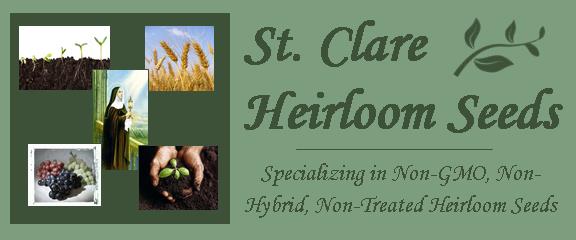
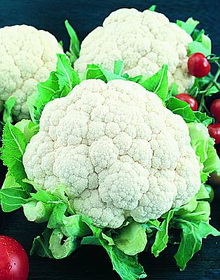





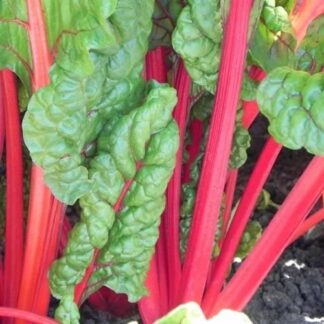




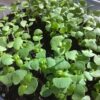
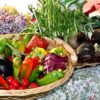
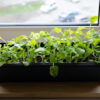
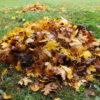
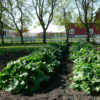

Gail Olsen (verified owner) –
All my favorites from one shop is a time saver. Fast shipping and good value.
GARY E. (verified owner) –
haven'[t planted yet, seeds arrived quickly !!